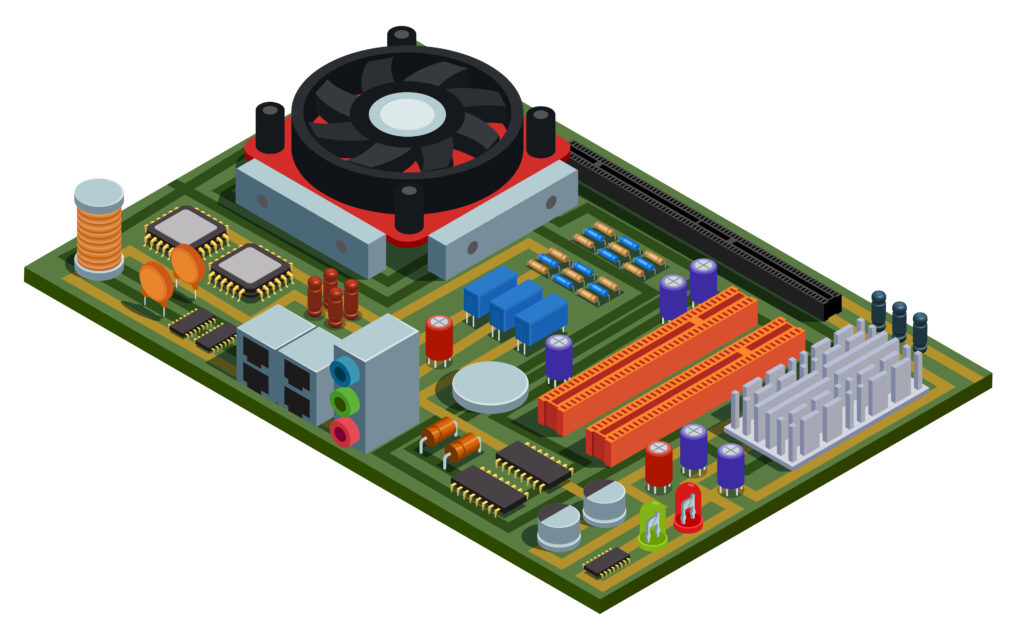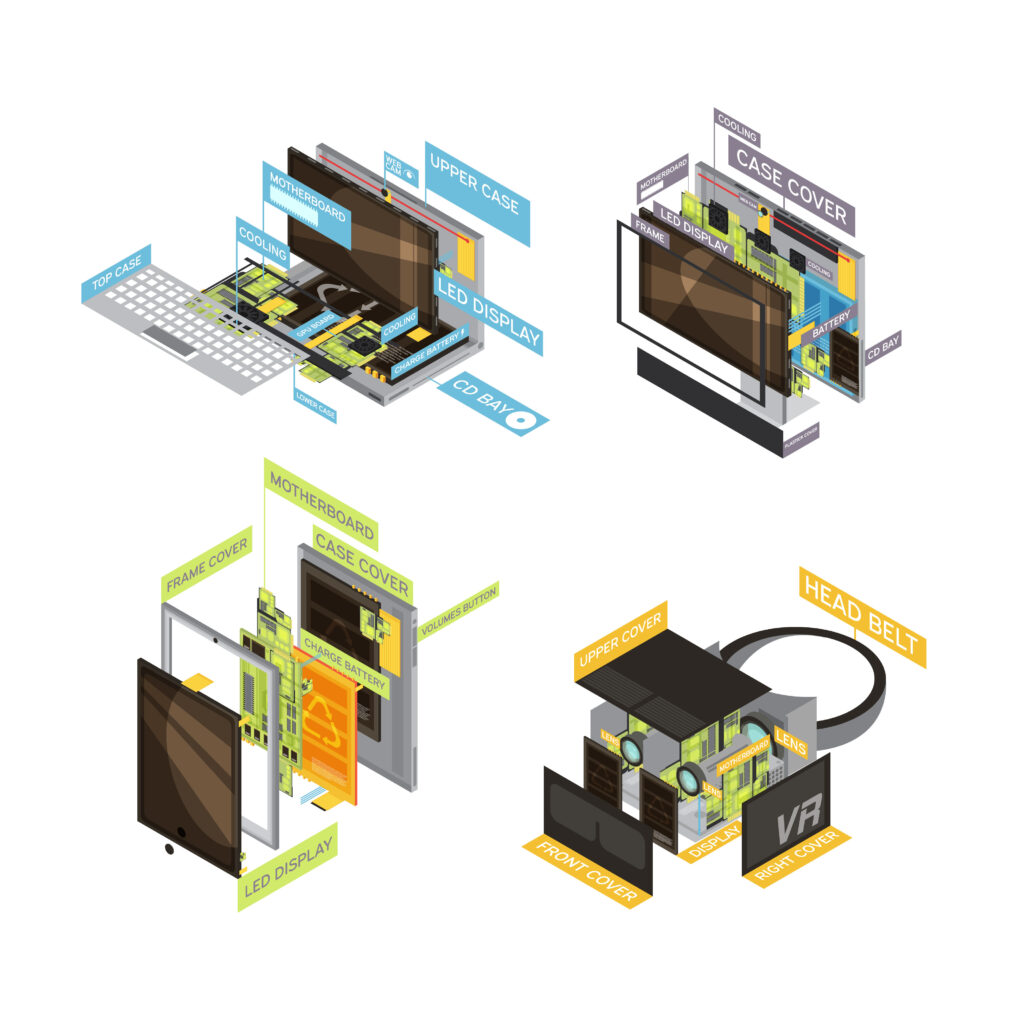ASICs, which are application-specific, are the main component of modern electronic systems. These custom application-designed chips are engineered specifically for one specific type of application and offer several benefits that make them popular in many industries. However, their development and implementation pose particular challenges. This blog post explores the benefits and drawbacks of custom ASIC design, thereby giving a complete understanding of their impact on electronic systems.
Advantages of Custom ASIC Design
1. Performance Optimization
A custom ASIC allows for specific optimization to ensure a set of tasks runs optimally. Because it is dedicated to a certain type of task, its performance far outweighs that of more general processors concerning computing speed and other performance measures because it will utilize less power as well.
2. Power Efficiency
Custom ASICs are highly power-efficient. Since the chip is tailored to perform only the necessary functions, unnecessary components and circuits can be eliminated, thus significantly reducing power consumption. This is particularly crucial for portable and battery-powered devices where energy efficiency is a top priority.
- Cost Effective in High Volumes of Manufacturing
Custom ASICs can prove to be rather expensive for initial development but economical in high numbers. After fixing the design, the per-chip manufacturing cost of ASIC is much less as compared to using off-the-counter components. As such, custom ASICs are especially suited for very high-volume product manufacturing.
- Miniaturization
Custom ASICs facilitate miniaturization because multiple functions are introduced within a single chip. This reduces the use of multiple discrete components, which not only saves space but also makes the design simple and lightweight for the final product.
- Security
ASICs can be used to design customized security for the specific application at hand. Directly embedded into the hardware are the security protocols of custom ASICs, making it more challenging to access without permission or reverse-engineer. The overall system’s security increases due to this reason.
- Competitive Advantage
Companies that produce custom ASICs can gain an edge in competition by offering unique features and higher-performance products. Custom ASICs enable the differentiation of product offerings in the market, so companies can serve specific customer requirements and differentiate themselves from competitors.
For insights into real-world ASIC applications, explore this Case Study on ASIC Design Techniques for Multi-Processor System-on-Chip (MPSoC) Development.

Challenges of Custom ASIC Design
- High Initial Development Cost
The development of custom ASICs is costly. It encompasses the costs involved in design, verification, prototyping, and testing. For small and medium-sized enterprises, such costs are too high, thus making custom ASIC designs inaccessible.
- Long Development Time
Designing an ASIC is an arduous process. An ASIC design encompasses multiple stages from specification to the final testing process, including simulation, fabrication, and testing. Extensive validation during each of these stages may add to the duration of the ASIC development process in general.
- Risk of Design Errors
Because of the ASIC design complexity, the risk of making design errors leading to costly revisions or even total failure exists. A small error in the design phase will give a chip that is nonfunctional, meaning redesign and even further delays.
- Lack of Flexibility
Once an ASIC is fabricated, it is not easy to make changes or updates. It is fixed in functionality, unlike the programmable device FPGAs. Any changes are a new design cycle that could be both time-consuming and expensive.
- Technology Obsolescence
The speed of advancement creates a challenge to custom ASICs. The technology used in an ASIC design may become obsolete before the product reaches the market. This situation demands cautious planning and foresight from the design stage such that the ASIC is indeed both relevant and long-lasting.
- Dependencies from the Supply Chain
Custom ASIC manufacture relies on complex supply chains; the foundry, material providers, and testing facilities contribute to this aspect. Disruption in any portion of this can delay the actual production timeline for the final output.
To explore more about the importance of Custom ASIC, Click here.

Strategies for Successful Custom ASIC Design
- Robust Design and Verification
A robust design and verification process is one of the success factors for custom ASIC projects. Advanced design tools, simulation techniques, and extensive testing can be used to detect and eliminate problems early in the development cycle.
- Collaborative Development
Working alongside seasoned associates like semiconductor factories, design firms, and irregularities can assist in enhancing the quality and dependability of custom ASICs. Also, external technical know-how can be used to reduce project risks and improve the effectiveness of the development process.
- Scalable Design Approaches
The scalable design approach includes modular design and reusable IP cores. It can reduce the development time and cost. The approach allows greater flexibility and easier updates to the design, thus future-proofing the ASIC against technological changes.
- Market Requirements Focus
The ASIC design should be understood and aligned to the market requirements. Engaging with customers and stakeholders early in the design process ensures that the final product meets the desired specifications and delivers value to end-users.
- Talent and Tools Investment
The main requirements for the success of custom ASIC development are investment in skillful personnel and advanced tools and design tools. The efficiency and quality of the design would be significantly improved by an informed team armed with the latest tools.
Further Reading: Explore The Ultimate ASIC Design and Development Service to understand how custom solutions address real-world challenges in product design.
Conclusion
Custom ASIC design provides unprecedented advantages in terms of its high performance, power efficiency, and miniaturization. These benefits enable the effective amalgamation of modern electronic systems into small packages. Nonetheless, development costs and timelines, as well as design risks, are all critical challenges. Strategic approaches combined with the right experience will ultimately enable companies to navigate the complexities of custom ASIC design to unlock all possible value in terms of providing state-of-the-art electronic products.
To learn more about this and other breakthroughs and see what’s new in the industry, check out Nanogenius Technologies. Below, we explore the technologies that will shape tomorrow.

